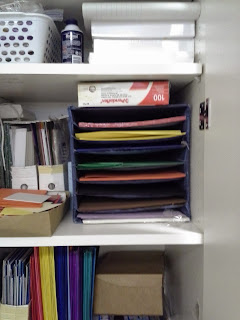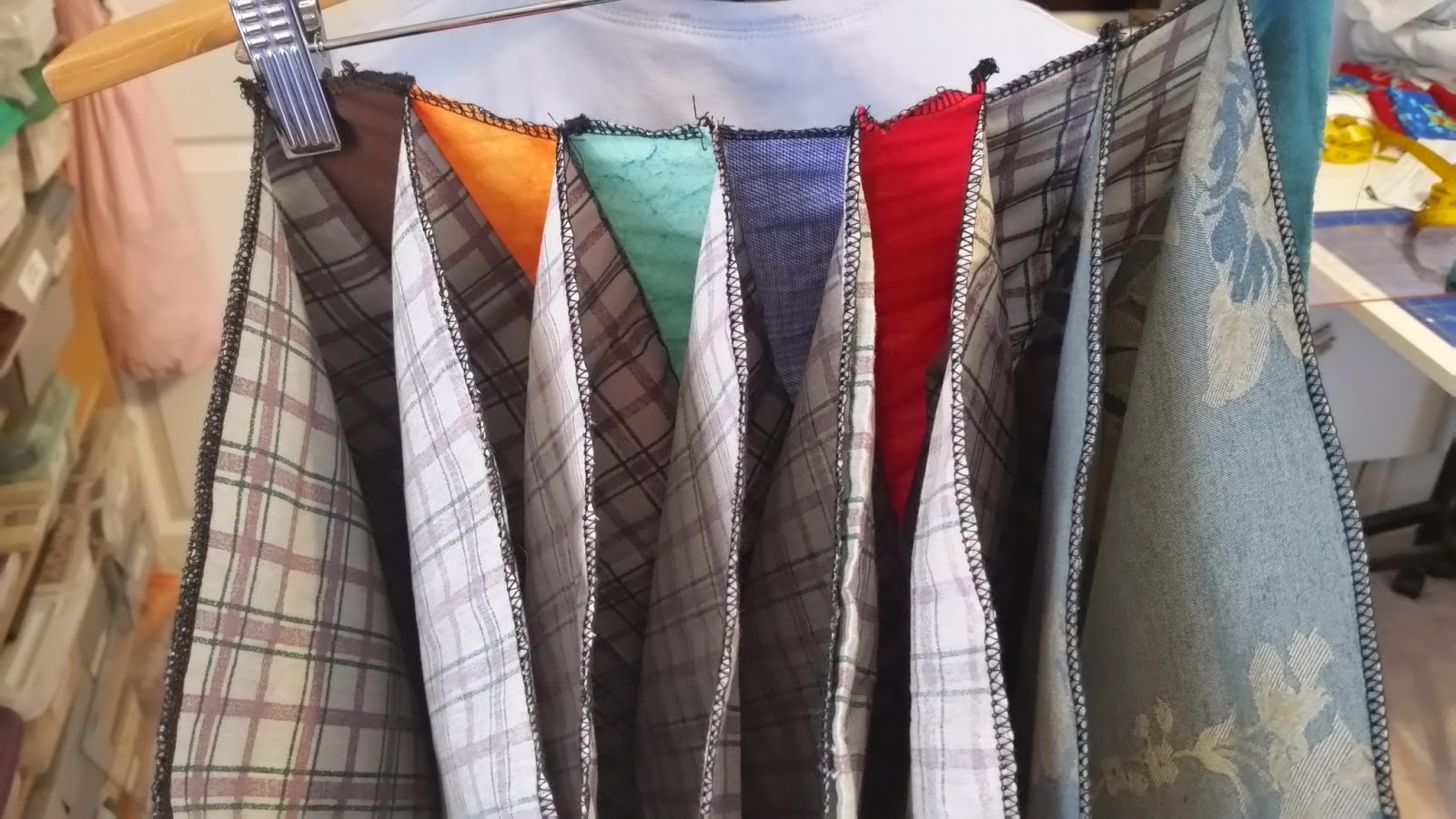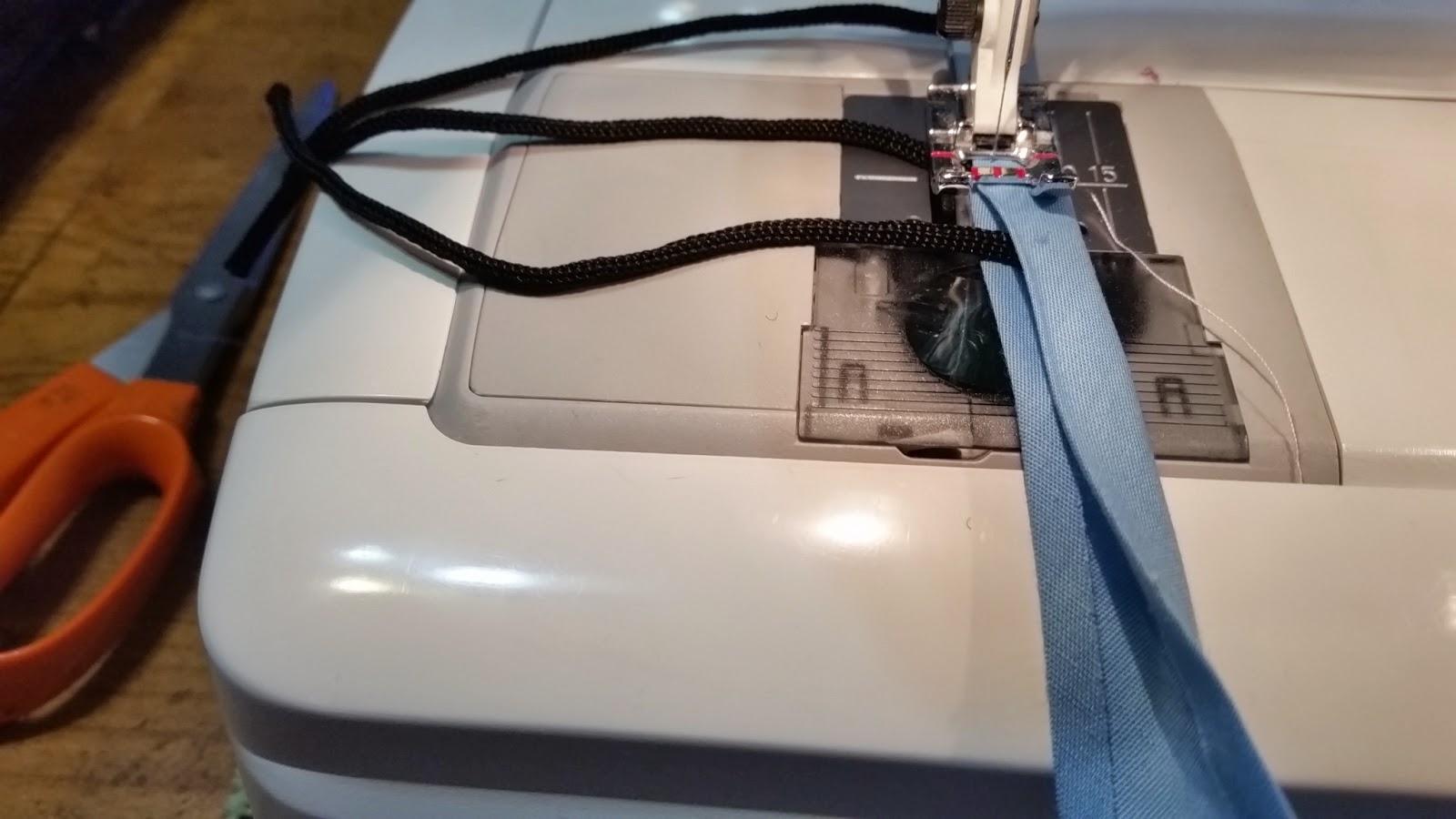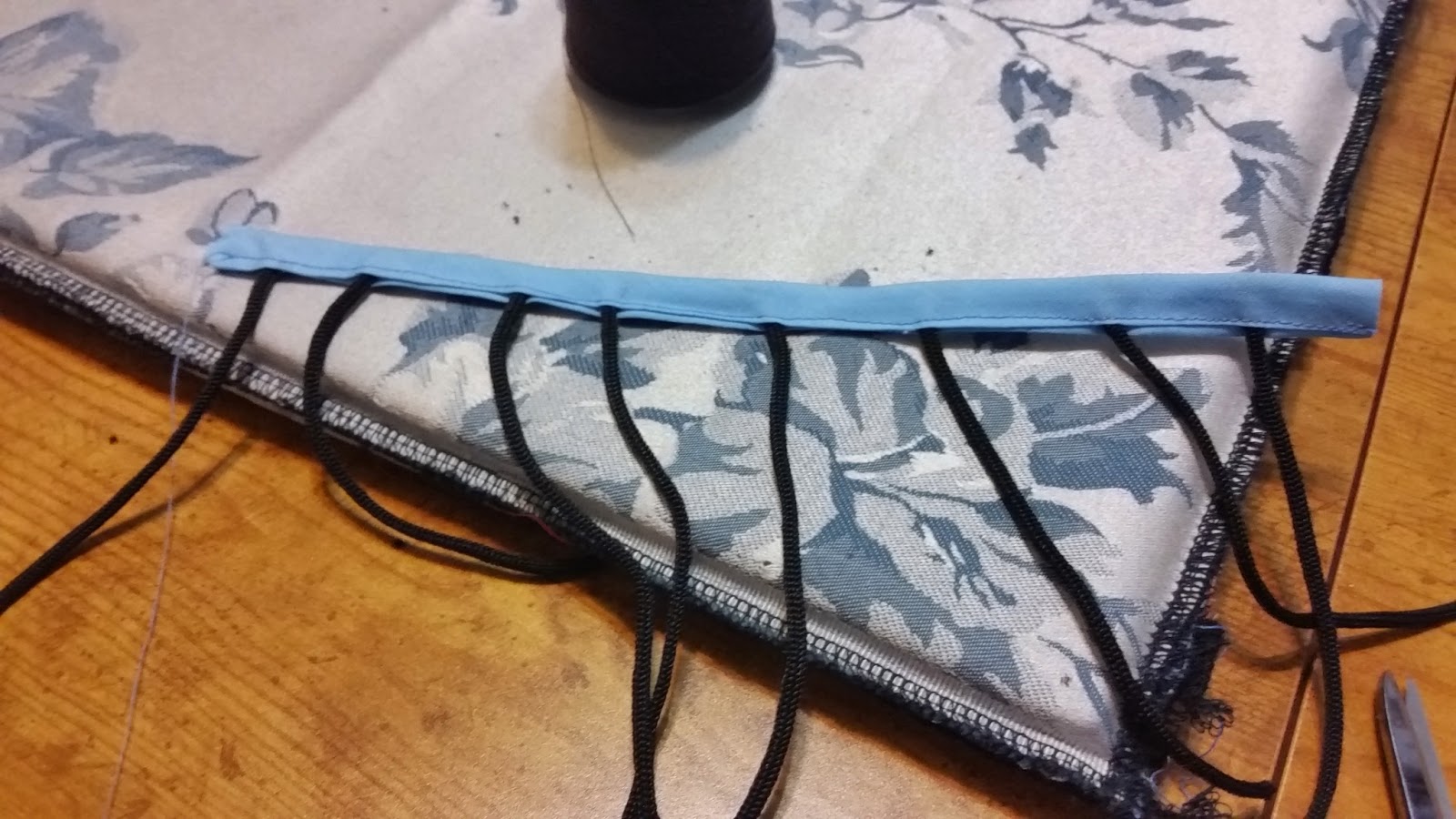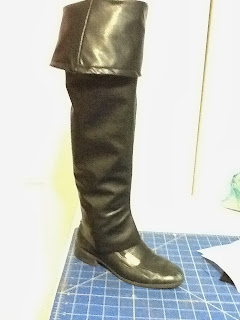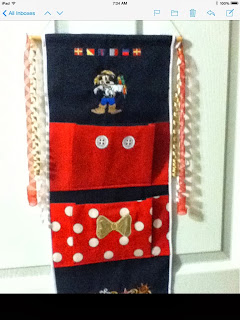I volunteer in a kindergarten class one day a week. The teacher switched to a new school this year, so we've been doing a lot of organizing to make things work more efficiently. I wanted to have some type of paper storage unit for colored paper so we could grab what we needed without pulling out every other color.
Most racks that are for purchase, are ridiculously priced, so I pulled out a piece of fabric that I'd had around for awhile, and got to creating.
You'll need 3-4 sheets of foam board to hold the shape of the box
3-4 yards of cotton fabric
3 buttons
7 sheets of corrugated cardboard to support the shelves
thread
sewing machine
fabric marker
I didn't think to take photos while I was creating, so I'll try to explain how I made my paper rack.
The top, bottom and sides and back are all the same size. I used a large sheet of colored paper as my guide and wanted to make the shelves 1 inch wider and 1 inch longer than the paper so I cut the fabric 13 x 19. I cut 15 pieces 13 x 19. I also cut 16 strips (2 x 19) to sew between the shelves. The seams for these are represented by the red lines in the box above.
Serge the shorter sides of 7 shelves for a cleaner finish before beginning to assemble the box.
Assembling the shelves:
Using 1/4 inch seam, I stitched a long side of one shelf, to the long side of a strip. I did the other side before adding a strip and shelf to the first side again. I continued sewing strips and shelves together till I had 7 shelves.
Once the shelves and strips were in place, I added another rectangle on the top and bottom shelf to make a pocket for foam board. The foam board would hold the form of the box and were slid into place from the back.. The seams are on the outside. The sides also got a second layer of fabric so foam board could be slid in from the back. Only the top and bottom foam boards are kept in place with a closed seam in the back. The foam board in the sides can be removed to move and store the box flat.
I didn't give the dimensions of the foam board, but once your box is together, you can cut them to fit. They will be slightly bigger than 12 x 18 - probably about 11.5 x 18.5. Cut a piece of cardboard for a test and then cut the rest to match.
I realized at this point that a back needed to be created to support the box and tabs to attach them to the sides and top.
Tabs:
I cut three strips of fabric 3x 10. I folded each in half, short sided together, and made three straps. I sewed the long sides together and kept the short side open for turning. Once turned right side out, I made a buttonhole near the folded edge of each tab. You can add the tabs to the sides of one 13 x 19 piece so that they will wrap around the sides and top of the box.
The diagram below attempts to explain what I was doing. The stars show where I stitched the tabs to the back, while the green lines are the buttonholes.
Back:
Fold the tabs toward the center and with right sides together, sew another 13 x 19 piece to the piece with the tabs. Leave one short side open. Turn it right side out and slip a piece of foam board between the two layers. Using a zipper foot, stitch the foam board into the back panel.
I'm not sure how I attached the back to the bottom. I may have used a glue gun.
At this point, you have foam board in the top, bottom and back. Slip foam board into the sides and use a chalk marker or fabric marker to mark on the top and sides where buttons need to be sewn to secure the back to the top and sides. Sew any type of button to the top and two sides so the back can be buttoned in place.
Slip a sheet of corrugated cardboard onto each shelf. This will prevent the paper from bowing down and resting on the shelf below.
You're now ready to sort out your colored paper and use your paper rack.
Update:
I found another teacher in grave need of my homemade paper rack and have just completed it. I found that instead of making tabs to secure the back to the rest of the rack, I just made ties with tabs. The tabs made it easier to give and extra amount of attachment for the cord to the fabric.
I sewed 5 inch cords between wide bias tape and then cut the tape between the cords. One cord was hand sewn to the corners and in the sides with another cord opposite it. I even added safety pins between the cords to add strength. I could sew the whole thing together, but this makes it possible to fold the rack up if it needs to be moved or for storage.
Most racks that are for purchase, are ridiculously priced, so I pulled out a piece of fabric that I'd had around for awhile, and got to creating.
You'll need 3-4 sheets of foam board to hold the shape of the box
3-4 yards of cotton fabric
3 buttons
7 sheets of corrugated cardboard to support the shelves
thread
sewing machine
fabric marker
I didn't think to take photos while I was creating, so I'll try to explain how I made my paper rack.
The top, bottom and sides and back are all the same size. I used a large sheet of colored paper as my guide and wanted to make the shelves 1 inch wider and 1 inch longer than the paper so I cut the fabric 13 x 19. I cut 15 pieces 13 x 19. I also cut 16 strips (2 x 19) to sew between the shelves. The seams for these are represented by the red lines in the box above.
Serge the shorter sides of 7 shelves for a cleaner finish before beginning to assemble the box.
Assembling the shelves:
Using 1/4 inch seam, I stitched a long side of one shelf, to the long side of a strip. I did the other side before adding a strip and shelf to the first side again. I continued sewing strips and shelves together till I had 7 shelves.
Once the shelves and strips were in place, I added another rectangle on the top and bottom shelf to make a pocket for foam board. The foam board would hold the form of the box and were slid into place from the back.. The seams are on the outside. The sides also got a second layer of fabric so foam board could be slid in from the back. Only the top and bottom foam boards are kept in place with a closed seam in the back. The foam board in the sides can be removed to move and store the box flat.
I didn't give the dimensions of the foam board, but once your box is together, you can cut them to fit. They will be slightly bigger than 12 x 18 - probably about 11.5 x 18.5. Cut a piece of cardboard for a test and then cut the rest to match.
I realized at this point that a back needed to be created to support the box and tabs to attach them to the sides and top.
Tabs:
I cut three strips of fabric 3x 10. I folded each in half, short sided together, and made three straps. I sewed the long sides together and kept the short side open for turning. Once turned right side out, I made a buttonhole near the folded edge of each tab. You can add the tabs to the sides of one 13 x 19 piece so that they will wrap around the sides and top of the box.
The diagram below attempts to explain what I was doing. The stars show where I stitched the tabs to the back, while the green lines are the buttonholes.
Back:
Fold the tabs toward the center and with right sides together, sew another 13 x 19 piece to the piece with the tabs. Leave one short side open. Turn it right side out and slip a piece of foam board between the two layers. Using a zipper foot, stitch the foam board into the back panel.
I'm not sure how I attached the back to the bottom. I may have used a glue gun.
At this point, you have foam board in the top, bottom and back. Slip foam board into the sides and use a chalk marker or fabric marker to mark on the top and sides where buttons need to be sewn to secure the back to the top and sides. Sew any type of button to the top and two sides so the back can be buttoned in place.
Slip a sheet of corrugated cardboard onto each shelf. This will prevent the paper from bowing down and resting on the shelf below.
You're now ready to sort out your colored paper and use your paper rack.
Update:
I found another teacher in grave need of my homemade paper rack and have just completed it. I found that instead of making tabs to secure the back to the rest of the rack, I just made ties with tabs. The tabs made it easier to give and extra amount of attachment for the cord to the fabric.
I sewed 5 inch cords between wide bias tape and then cut the tape between the cords. One cord was hand sewn to the corners and in the sides with another cord opposite it. I even added safety pins between the cords to add strength. I could sew the whole thing together, but this makes it possible to fold the rack up if it needs to be moved or for storage.
